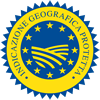Description
Limone di Siracusa PGI is a citrus fruit belonging to the species Citrus limon L. Burm, deriving from the Femminello cultivar and its clones, in the following varieties: Primofiore, Bianchetto or Maiolino (or spring lemon), Verdello (or summer lemon).
Production Area
The production area of Limone di Siracusa PGI is within all or parts of the administrative territory of 10 municipalities situated within 10 km from the coast and no more than 210 metres above sea level: Siracusa, Avola, Melilli, Noto, Priolo Gargallo, Floridia, Solarino, Augusta, Sortino and Rosolini, in the Province of Syracuse, in the Sicily region.
Production Method
The plant spacing must be a maximum density of 400-500 plants per hectare or 850 units in the case of variable density plantations. Traditional, integrated or organic cultivating methods can be used. All operations must be carried out so as to ensure the right balance and development of the tree, which must always be exposed to the correct level of ventilation and sun. The fruit are harvested directly from the tree by hand, with the use of secateurs to cut the stem. The fruit are harvested at different times, depending on variety: Primofiore from October 1st; Bianchetto from April 1st; Verdello from June 1st.
Appearance and Flavour
Limone di Siracusa PGI has different characteristics depending on the variety. Primofiore is an elliptic shape; the peel and pulp range from pale green to citrus yellow in colour and the juice is citrine yellow. Bianchetto, or Maiolino, is elliptic or ovoid in shape; the peel is pale yellow, the pulp yellow and the juice citrine-yellow. Verdello is an elliptic-spherical shape; the peel is pale green, while the juice and pulp are both citrine yellow.
History
The lemon plant arrived in Syracuse from Burma two thousand years ago, finding ideal growing conditions: fertile soils, water reserves, a temperate climate, and proximity to the sea. The intensive cultivation of lemons was started by the Jesuits, who were expert farmers, in the 17th century. They soon became one of the primary food sources in the area, with the progressive creation of companies dedicated to processing lemons to obtain juice concentrate, calcium citrate and citric acid, mainly sold in the United States and Britain. Lemon cultivation in the Syracuse area has remained one of the most important assets of the local economy.
Gastronomy
Limone di Siracusa PGI should be kept in the refrigerator or a cool, dry place. The ideal storage temperature is between 6 and 12 °C. The characteristics of the juice (such as the yield, Vitamin C and citric acid content), as well as its distinctive essential oils (rich in aldehydes such as neral and geraniol) make this lemon the perfect basic ingredient for almost any recipe. It’s ideal for using in cakes and desserts, but its versatility also makes it perfect for enhancing the delicate taste of fish, softening meat, refreshing salads, and flavouring vegetables and sauces. A delicious typical Sicilian dish is arancinetti with Limone di Siracusa PGI and saffron.
Marketing
The product is marketed as Limone di Siracusa PGI, in the following varieties: Primofiore, Bianchetto and Verdello. It is sold fresh, in the Extra and First categories and in sizes 3, 4 and 5, and for processing, also with different categories, size classes, peel colour, weight and grading. The fresh product can be sold loose or packed in suitable cardboard, wooden or plastic containers, or in nets and bags with a plastic fastening. All packaging and containers must bear the Limone di Siracusa PGI logo.
Distinctive Features
Limone di Siracusa PGI is different from other lemons due to its extreme juiciness, the numerous oil glands in the peel, and its high-quality essential oils. It is also extremely thirst-quenching, aromatic and rich in vitamin C and minerals.
























